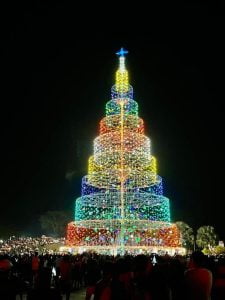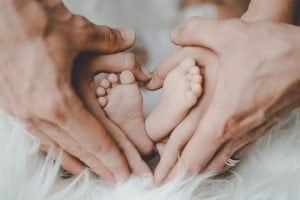Christmas is celebrated all over the world with traditions based on different cultural backgrounds. Christmas traditions in the Philippines are influenced by the Spanish, American and Japanese colonizers. Neighboring China also has influences over local traditions.
So what traditions do Filipinos practice during Christmastime? This article will highlight the popular practices Filipinos do during the Yuletide season.
Christmas in September

Filipinos celebrate the longest Christmas in the world. As soon as September begins, Christmas carols fills the air and decorations go up in homes and buildings. There is nothing quite like the spirit that Christmas evokes in Filipinos. The festivities last until shortly after New Year.
Simbang Gabi
December 16th marks the beginning of Simbang Gabi. For nine very early mornings, Filipinos attend mass at the closest church. They believe that if one completes all nine morning masses, his/her Christmas wish will come true. After mass, churchgoers feast on puto bumbong, bibingka and tsokolate sold outside the church.
Caroling
Caroling is one of the most well-loved Christmas traditions in the Philippines. As Christmas music starts to play on the radio, children sing their own renditions outside of homes. They go from house to house singing carols in exchange for coins and other treats. And it’s not just the children, groups of teenagers and even adults do this for fund-raising. Most bring their own instruments and make an entire show out of it.
Misa de Gallo
Filipinos go to church on Christmas Eve as a tradition. Misa del Gallo is an extra special mass with candle-lighting, singing and even re-enacting of the nativity scene. It is the first mass after simbang gabi and Filipinos make their wishes after attending Misa de Gallo.
Noche Buena
Noche Buena is the most awaited meal of the year. Filipinos pull out all stops for the Christmas feast. Rich or poor, families serve the best they can offer on the table. Noche Buena means there’s more food than usual on the table. Children look forward to the feast because their favorites like spaghetti and sweets will be served. Companies even setup their own Noche Buena feast for employees who have to work on Christmas Eve.
Aguinaldo
Gift-giving is an important Christmas tradition on the Philippines. Children excitedly await this part of Christmas when they get presents or aguinaldo from parents. They also receive presents from godparents, grandparents and older relatives. Friends also give gifts in the form of manito-manita. Filipinos exchange gifts during Christmas parties.
Media Noche
The celebrations continue well after Christmas day. As part of the tradition, families also gather for Media Noche, the New Year’s Eve feast. A lot of superstitions come with Media Noche. As an example, Filipinos serve an abundant feast to ensure an abundant year. They place round fruits on the table to symbolize money. People also eat sweets in hopes of having a year of harmonious relationships. Because of these superstitions, Filipinos have a wide variety of food for Media Noche.
Feast of the Three Kings
Christmas season in the Philippines ends on Epiphany or the Feast of the Three Kings. Catholics celebrate Epiphany 12 days after Christmas. It is their way of remembering the three wise men who traveled to Bethlehem to present gifts to the infant Jesus. Filipinos usually wean off the holiday high after Epiphany and start taking down the decorations.





